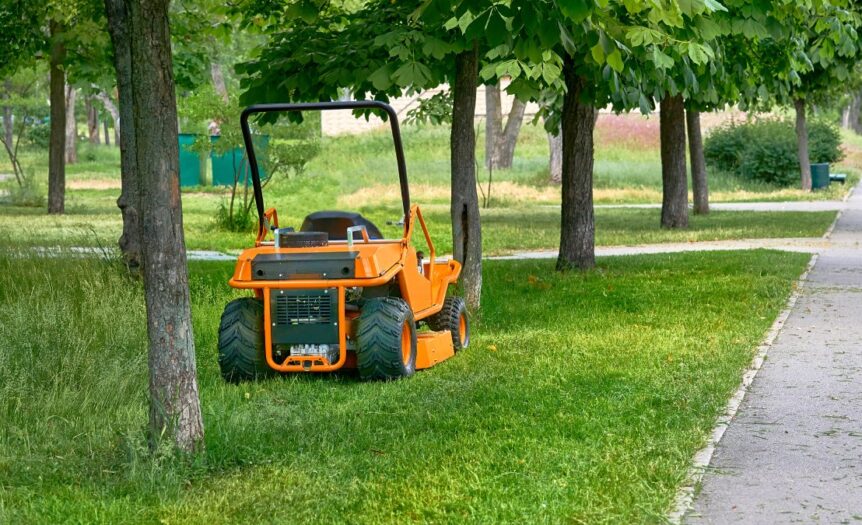To keep your commercial lawn mower running, pay attention to your spark plugs. These small parts are an essential component for high-performing equipment. The right spark plugs tailored to your mower’s engine can boost reliability and extend its lifespan.
In this guide, we’ll cover the important factors to consider and offer practical tips for choosing the best spark plugs.
Understand Your Engine Specs
The first step is to understand your mower’s engine specifications. Check the owner’s manual or the engine model number to find information, such as the type and size of spark plug required. Common information includes the thread diameter, reach (length of the threaded portion), and heat range.
A larger mower built for long use may need a specific heat range to prevent overheating. Using the wrong plug can cause poor performance or engine damage.
Material and Durability Matter
There are three common types of material to choose from:
- Copper is cost-effective, making it a good match for less demanding mowers. While it provides good conductivity, it has a shorter lifespan.
- Platinum plugs can last up to twice as long as copper. They are ideal for moderately demanding applications.
- Iridium is the most durable. Its fine electrodes conduct electricity efficiently, making it suitable for heavy-duty mowers.
If your mower operates for long hours in harsh conditions, consider iridium plugs for their extended service life.
Check the Gap
The spark plug gap is the small space between the electrodes where combustion ignites. Too large or too small a gap can be a problem. Many plugs come pre-gapped, but verify with a gauge before installation. Refer to your mower’s manual for the ideal gap size.
For instance, a standard plug may require a gap of 0.028 to 0.031 inches, while some higher-performance mowers need a larger gap.
Brand Compatibility
Sticking to reputable spark plug brands can make a difference in reliability and performance. While aftermarket options may seem tempting, always use spark plugs that meet or exceed the manufacturer’s original equipment specifications to avoid issues.
What if the Old Spark Plug Is Stuck?
If replacing an old spark plug becomes tricky, you might wonder how to safely remove stuck spark plugs from lawn mowers. The best approach involves using penetrating oil to loosen grime and corrosion. Allow the oil to sit for several minutes, then use a properly fitting socket wrench with gentle, steady force. Avoid applying too much pressure, as it could damage the plug or the engine’s threads.
Choosing spark plugs for commercial lawn mowers isn’t a one-size-fits-all process—it’s about aligning with your mower’s specific requirements. By following these steps, you’ll guarantee reliable starts, improved fuel efficiency, and long-lasting engine health.
Need help deciding? Keep a record of your spark plug choices and their performance so you’ll know exactly what works best for your mower in the future.










 Deering Estate
Deering Estate
 Massage Envy South Miami
Massage Envy South Miami
 Calla Blow Dry
Calla Blow Dry
 My Derma Clinic
My Derma Clinic
 Sushi Maki
Sushi Maki
 Sports Grill
Sports Grill
 The Healthy Kitchen
The Healthy Kitchen
 Golden Rule Seafood
Golden Rule Seafood
 Malanga Cuban Café
Malanga Cuban Café

 Kathleen Ballard
Kathleen Ballard
 Panter, Panter & Sampedro
Panter, Panter & Sampedro
 Vintage Liquors
Vintage Liquors
 The Dog from Ipanema
The Dog from Ipanema
 Rubinstein Family Chiropractic
Rubinstein Family Chiropractic
 Your Pet’s Best
Your Pet’s Best
 Indigo Republic
Indigo Republic




 ATR Luxury Homes
ATR Luxury Homes


 2112 Design Studio
2112 Design Studio
 Hamilton Fox & Company
Hamilton Fox & Company
 Creative Design Services
Creative Design Services
 Best Pest Professionals
Best Pest Professionals
 HD Tree Services
HD Tree Services
 Trinity Air Conditioning Company
Trinity Air Conditioning Company
 Cisca Construction & Development
Cisca Construction & Development
 Mosquito Joe
Mosquito Joe
 Cutler Bay Solar Solutions
Cutler Bay Solar Solutions


 Miami Royal Ballet & Dance
Miami Royal Ballet & Dance
 Christopher Columbus
Christopher Columbus
 Pineview Preschools
Pineview Preschools
 Westminster
Westminster
 Carrollton
Carrollton
 Lil’ Jungle
Lil’ Jungle
 Frost Science Museum
Frost Science Museum
 Palmer Trinity School
Palmer Trinity School
 South Florida Music
South Florida Music
 Pinecrest Orthodontics
Pinecrest Orthodontics
 Dr. Bob Pediatric Dentist
Dr. Bob Pediatric Dentist
 d.pediatrics
d.pediatrics
 South Miami Women’s Health
South Miami Women’s Health

 The Spot Barbershop
The Spot Barbershop
 My Derma Clinic
My Derma Clinic




 Miami Dance Project
Miami Dance Project

 Rubinstein Family Chiropractic
Rubinstein Family Chiropractic
 Indigo Republic
Indigo Republic

 Safes Universe
Safes Universe
 Vintage Liquors
Vintage Liquors
 Evenings Delight
Evenings Delight





 Atchana’s Homegrown Thai
Atchana’s Homegrown Thai
 Baptist Health South Florida
Baptist Health South Florida

 Laser Eye Center of Miami
Laser Eye Center of Miami
 Visiting Angels
Visiting Angels
 OpusCare of South Florida
OpusCare of South Florida

 Your Pet’s Best
Your Pet’s Best





 HD Tree Services
HD Tree Services
 Hamilton Fox & Company
Hamilton Fox & Company


 Creative Design Services
Creative Design Services